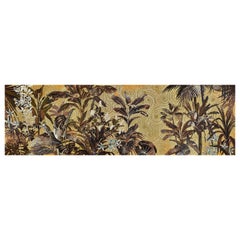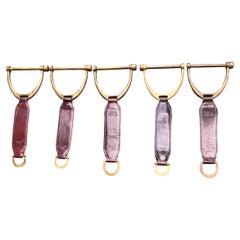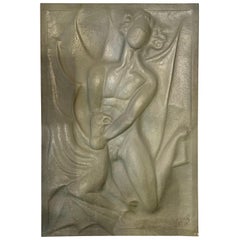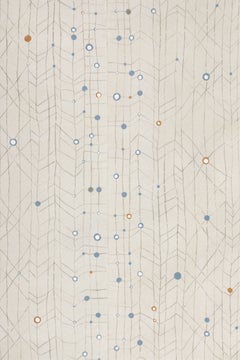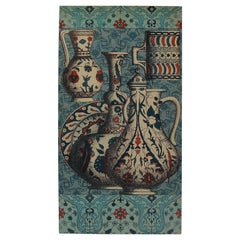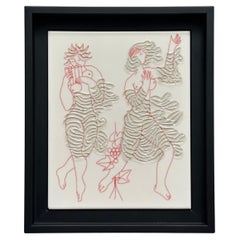Italian Decorative Art
21st Century and Contemporary Modern Italian Decorative Art
Aluminum
1970s Mid-Century Modern Vintage Italian Decorative Art
Brass
Early 20th Century Art Deco Italian Decorative Art
Pewter
2010s Italian Decorative Art
Paper, Paint
1950s Vintage Italian Decorative Art
Masonite
1980s Classical Greek Vintage Italian Decorative Art
Earthenware
20th Century Mid-Century Modern Italian Decorative Art
Giltwood
1740s Antique Italian Decorative Art
Wood
1790s Antique Italian Decorative Art
Wood
Late 20th Century Art Deco Italian Decorative Art
Wood
Mid-19th Century Romantic Antique Italian Decorative Art
Wrought Iron, Tin
Early 20th Century Italian Decorative Art
Metal
20th Century Mid-Century Modern Italian Decorative Art
Wood
21st Century and Contemporary Modern Italian Decorative Art
Porcelain
19th Century Antique Italian Decorative Art
Copper
21st Century and Contemporary Neoclassical Italian Decorative Art
Wood, Paper
1970s Vintage Italian Decorative Art
Brass
18th Century Rococo Antique Italian Decorative Art
Rock Crystal
Mid-20th Century Baroque Italian Decorative Art
Pottery
Late 19th Century Arts and Crafts Antique Italian Decorative Art
Plaster, Paint
Mid-19th Century Early Victorian Antique Italian Decorative Art
Wood
19th Century Antique Italian Decorative Art
Wood
Mid-19th Century Antique Italian Decorative Art
Giltwood
21st Century and Contemporary Louis XVI Italian Decorative Art
Wood, Paint
21st Century and Contemporary Modern Italian Decorative Art
Stone, Marble, Copper
1950s Mid-Century Modern Vintage Italian Decorative Art
Paper
Early 2000s Mid-Century Modern Italian Decorative Art
Steel
Early 20th Century Edwardian Italian Decorative Art
Canvas, Giltwood
Mid-20th Century Italian Decorative Art
Stone, Marble
20th Century French Provincial Italian Decorative Art
Faux Bamboo
21st Century and Contemporary Modern Italian Decorative Art
Plexiglass
18th Century Antique Italian Decorative Art
Wood, Giltwood
1960s Mid-Century Modern Vintage Italian Decorative Art
Ceramic
1990s Mid-Century Modern Italian Decorative Art
Aluminum, Iron
2010s Italian Decorative Art
Paint, Paper
17th Century Renaissance Antique Italian Decorative Art
Gesso, Canvas, Giltwood
1950s Gothic Revival Vintage Italian Decorative Art
Wood, Paint
Mid-19th Century Antique Italian Decorative Art
Wood
21st Century and Contemporary Italian Decorative Art
Crystal, Stainless Steel
19th Century Antique Italian Decorative Art
Mirror
21st Century and Contemporary Modern Italian Decorative Art
Art Glass
21st Century and Contemporary Modern Italian Decorative Art
Glass, Paper, Wood
19th Century Antique Italian Decorative Art
Plaster, Giltwood
21st Century and Contemporary French Provincial Italian Decorative Art
Paper
1980s Other Vintage Italian Decorative Art
Earthenware
Early 18th Century Baroque Antique Italian Decorative Art
Brass
Early 19th Century Neoclassical Revival Antique Italian Decorative Art
Wood
21st Century and Contemporary Modern Italian Decorative Art
Marble
19th Century Antique Italian Decorative Art
Marble
19th Century Antique Italian Decorative Art
Wood
1960s Vintage Italian Decorative Art
Aluminum, Enamel, Steel
Mid-20th Century Neoclassical Revival Italian Decorative Art
Acrylic
1950s Folk Art Vintage Italian Decorative Art
Canvas
1960s Brutalist Vintage Italian Decorative Art
Bronze
1980s Mid-Century Modern Vintage Italian Decorative Art
Paper
2010s Italian Decorative Art
Paint, Paper
1950s Mid-Century Modern Vintage Italian Decorative Art
Ceramic
1970s Vintage Italian Decorative Art
Brass
Read More
At Colonial Williamsburg, Everything Old Is New Again
With the help of a new director, the Virginia institution's folk art and decorative arts museums are undergoing extensive upgrades.
New York’s Hirschl & Adler Showcases the American Workmanship and Design Panache of Neoclassical Treasures
The gallery's latest exhibition proves that museum-quality pieces entice and inspire, whether in traditional or more modern interiors.
